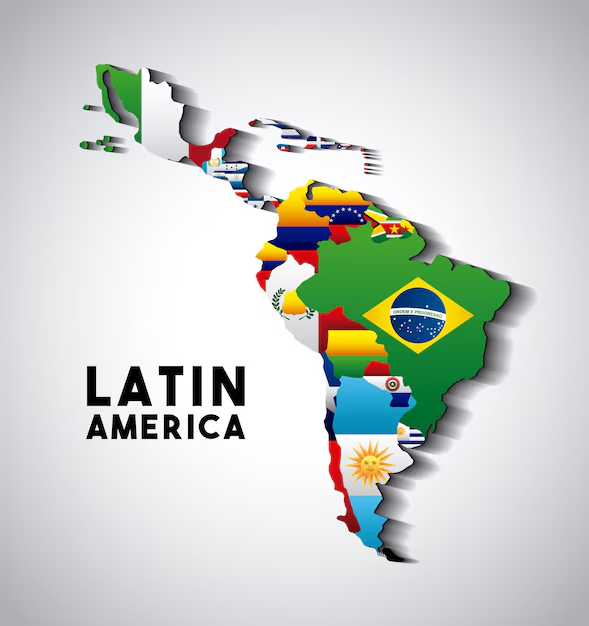Fostering Inclusive Education: Celebrating Racial and Ethnic Diversity in North and South American Schools
In our increasingly interconnected world, the vibrant tapestry of racial and ethnic diversity within North and South American schools presents both a challenge and an unparalleled opportunity. Inclusive education, far from being a mere policy objective, is a crucial cornerstone for cultivating a society that values individual uniqueness and thrives on collaborative strength. This article explores key strategies to promote inclusive education, equipping educators, administrators, and community members with the tools to build a more equitable and enriching learning environment for all students.
The benefits of fostering inclusive education extend far beyond the classroom. By celebrating diversity, we empower students to become globally competent citizens, prepared to navigate the complexities of an increasingly interconnected world. Promoting understanding and respect for diverse cultures fosters empathy, critical thinking, and a deeper appreciation for the human experience.
Building an Inclusive Educational Ecosystem: A Multifaceted Approach
- Cultivating a Culture of Celebration: Schools should actively celebrate the diverse racial and ethnic backgrounds of their student population. This involves showcasing cultural traditions, languages, and perspectives in a positive and respectful manner, ensuring all students feel valued and represented.
- Multicultural Curriculum Integration: Integrating diverse perspectives into the curriculum is essential. This goes beyond simply adding diverse characters to textbooks; it requires a fundamental shift towards a curriculum that reflects the richness and complexity of various cultural histories, viewpoints, and contributions to society.
- Comprehensive Language Support: Providing robust language support programs is vital for ensuring equitable access to education for students from diverse linguistic backgrounds. These programs must be comprehensive, addressing both academic and social-emotional needs.
- Facilitating Cross-Cultural Exchange: Organizing structured opportunities for cross-cultural interactions – through student exchange programs, collaborative projects, or community events – promotes understanding and breaks down stereotypes. These experiences foster empathy and build meaningful relationships.
- Culturally Responsive Teacher Training: Equipping educators with the skills and knowledge to implement culturally responsive teaching practices is paramount. This includes training on culturally relevant pedagogy, addressing implicit bias, and creating inclusive classroom environments.
- Addressing Bias and Promoting Empathy: Proactive measures to address bias and stereotypes are crucial. This involves implementing comprehensive anti-bias training for staff and students, promoting critical thinking skills to identify and challenge biases, and fostering a school climate where empathy and respect are valued above all else.
- Engaging Families and Communities: Building strong partnerships with families and the wider community is essential. This involves creating platforms for open dialogue, organizing community events that celebrate diversity, and engaging families in school activities.
- Robust Anti-Bullying Programs: Implementing comprehensive anti-bullying initiatives, specifically addressing racial and ethnic discrimination, is crucial for creating a safe and welcoming learning environment. These programs should include preventative measures, clear reporting mechanisms, and effective interventions.
- Representational Educational Resources: Ensuring that educational resources – textbooks, learning materials, and library collections – accurately reflect the diversity of the student population is fundamental. Students need to see themselves represented in the materials they use.
- Expanding Access to Higher Education: Creating scholarships and grants specifically designed to support students from underrepresented communities expands access to higher education and promotes social mobility.
- Mentorship and Peer Support: Establishing mentorship programs that connect students from different racial and ethnic backgrounds can provide crucial support and guidance, fostering personal growth and a sense of belonging.
- Showcasing Cultural Heritage: Organizing school-wide events and celebrations that showcase the rich tapestry of North and South American cultures provides students with opportunities to learn about, appreciate, and share their own heritage.
- Raising Awareness and Challenging Norms: Launching awareness campaigns that highlight the benefits of diversity and inclusive education can help challenge ingrained stereotypes and promote a culture of acceptance and respect.
- Building Community Partnerships: Collaborating with local organizations and businesses creates opportunities for students to engage in community service projects, fostering a sense of civic responsibility and promoting social cohesion.
- Ongoing Professional Development: Providing ongoing professional development opportunities for educators keeps them abreast of the latest research, best practices, and emerging challenges in inclusive education.
By embracing these strategies, North and South American schools can move beyond mere tolerance to genuine celebration of diversity. This collective effort will not only enrich the educational experience for all students but will also cultivate a more just and equitable society for generations to come. Let us work together to create schools where every student feels valued, respected, and empowered to reach their full potential.
```





No comments yet. Be the first to share your thoughts!